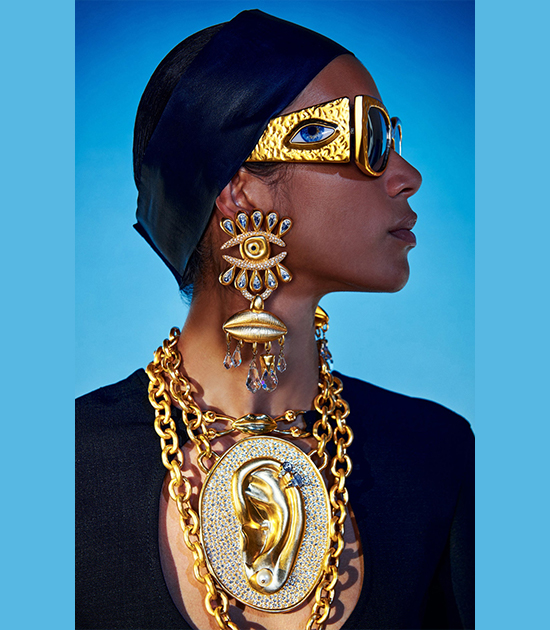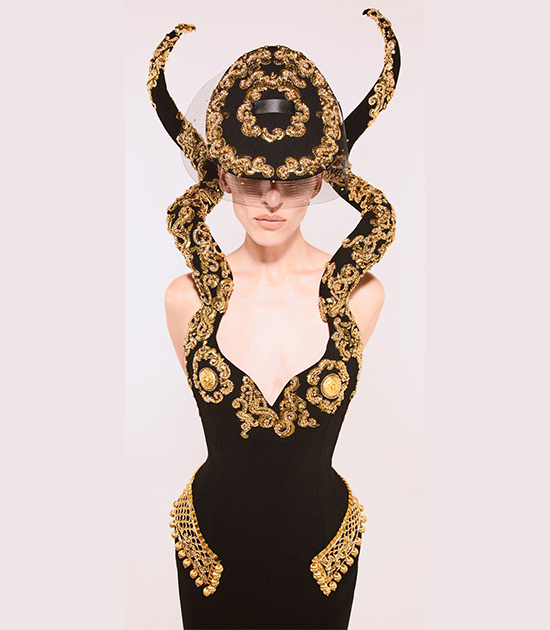Schiaparelli: Fantasy fashion for uncertain times
“Poverty forced me to work, and Paris gave me a liking for it,” Elsa Schiaparelli once said about living in the city where she opened a couture house in 1927 and was known as one of the most innovative and influential designers who dressed the likes of Greta Garbo, Marlene Dietrich and Mae West.
Yves Saint Laurent, a protegé, related how “she slapped Paris, smacked it, tortured it, and bewitched it. And it fell madly in love with her.” Like her greatest rival Chanel, she was a designer who thrived after the hardships of the First World War and the flu pandemic of 1918.

She didn’t have to live a bohemian life. Born in 1890 at the Palazzo Corsini in Rome, she had an aristocratic and intellectual upbringing: A mother descended from the Medicis, a father who was director of the Lincei Library and a professor of Oriental literature, one uncle was an astronomer, another an Egyptologist.
She studied philosophy and published “Arethusa,” a collection of overtly sensual poems, in 1911, prompting her parents to send her to a convent in Switzerland. The rebel that she was, she went on a hunger strike.

This need for personal freedom would find its fulfillment when she made it to London in 1913, getting married on a whim to Wilhelm Wendt de Kerlor, a young theosophist she met because of her fascination with the mystical.
He was actually a conman claiming to have psychic powers but she was nevertheless charmed. His practice of fortune telling was illegal in London, forcing them to leave for New York, where they lived off her dowry. Almost immediately after Elsa gave birth to their daughter in 1920, Wilhelm abandoned them, leaving her to raise the child alone.

Moving to Paris in 1922, she would be introduced to the fashion world upon accompanying a friend to a fitting at Paul Poiret, the king of Paris couture. Poiret opened her eyes to a world of luxury and endless possibilities in design and encouraged her to become a freelance designer.
By 1927, Vogue picked up her hand-knit pullovers with surrealist images, prompting an expansion to sports and casual wear, with evening wear following in 1931 to crown a flourishing business that reached its culmination with the “Schiap Shop” at Place Vendome. Her success had such an impact even in America, where she was offered her first licensing agreements.

She became famous for many innovations. She crumpled rayon 50 years before Issey Miyake and experimented with materials using the latest technology even if a few, like the cellophane for Diana Vreeland’s dress, were discontinued after melting at the dry cleaners.
Her creations helped women with their emancipated lifestyle: The first garments with visible zippers, jumpsuits that had maxi pockets intended to hold the equivalent of a handbag, the wrap dress that would be popularized by Diane Von Furstenberg 40 years later, the divided skirt that would shock the tennis world when worn by Lili de Alvarez at Wimbledon in 1931, the interior bra for a swimsuit, multiple-use designs with detachable and reversible elements, the first evening dress with a matching jacket, and a speakeasy dress with hidden pockets to hold flasks of liquor during American Prohibition.
It’s her collaboration with Surrealist artists, however, that would get the most press and distinguish her from Chanel, who dismissed her as “the Italian artist who makes clothes” and was reported to have even steered her towards a candelabra at a ball to set her costume on fire.

With Salvador Dali she produced the 1936 day suit with a chest of drawers as pockets, the 1937 lobster dress worn by Wallis Simpson in photos by Cecil Beaton, the Tears dress simulating torn animal flesh, the Skeleton dress with quilted bones, and the 1937 Shoe Hat.
With Jean Cocteau she created the 1937 evening coat with two profiles forming a vase of roses. The artists actually fed off her creativity as well, with Man Ray and Picasso creating art based on her patterns and clothing.

Recently, the house that she founded has been making waves again, with the appointment of the Texan Daniel Roseberry as artistic director in 2019 — a perfect choice since he and Elsa have a “shared feeling of dislocation and displacement” growing up in conservative milieus. His Anglican-priest father took a public stand against homosexuality when Daniel was an adolescent.
He related how he was about to join the seminary: “I almost didn’t do fashion because of this fear I had of my own body.” Fortunately, he persisted with his inclinations and studied at FIT instead, bringing to the world a fresh, new viewpoint in design.
His “psycho chic” has a flair for the fantastic but is still accessible for the woman of today while paying homage to Elsa, capturing the irony and what she was all about. Just as her work reflected the chaos and the hope of the turbulent era in which she lived, with the present pandemic, Roseberry asks, “What does art look like? What is identity? How do we dress for the end of the world?”
Schiaparelli answered these questions with candor and humor but one of her greatest legacies is her commitment to fantasy, her understanding that we need it most during complicated times.


